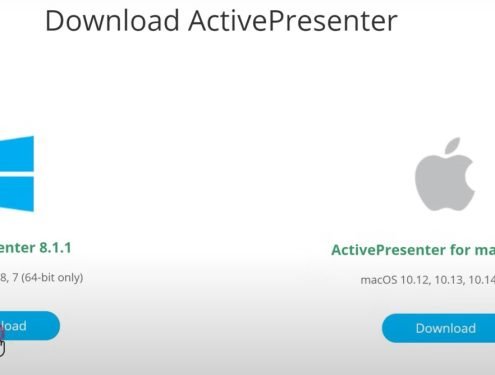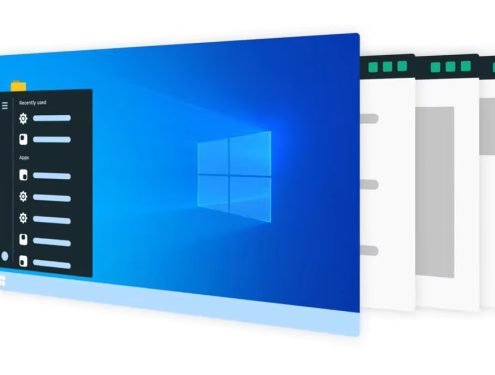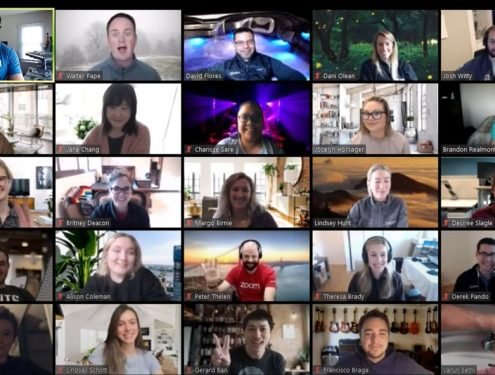Creating an online course, Learning Management System (LMS), or educational website with WordPress in May 2025 is a powerful and cost-effective approach. WordPress’s flexibility, combined with the right themes and plugins, allows you to build a robust and engaging learning platform. Here’s a comprehensive guide:
Phase 1: Planning and Setup
- Define Your Niche and Target Audience:
- What subjects or skills will your courses cover?
- Who is your ideal student? Consider their experience level, goals, and learning preferences.
- Research the demand for your chosen topics.
- Choose Your Domain Name and Web Hosting:
- Select a domain name that is relevant, memorable, and easy to spell.
- Choose a reliable web hosting provider optimized for WordPress. Consider factors like speed, security, and scalability. Popular options include SiteGround, Bluehost, WP Engine, and Kinsta.
- Install WordPress:
- Most hosting providers offer a one-click WordPress installation process through their control panel.
- Basic WordPress Setup:
- Configure your site title, tagline, and permalinks (choose a SEO-friendly structure like “Post name”).
- Set up essential pages like Homepage, About Us, Contact Us, Privacy Policy, and Terms of Service.
Phase 2: Selecting the Right Tools (Theme and LMS Plugin)
- Choose an LMS-Compatible Theme:
- Look for themes specifically designed for educational websites or those that offer good integration with popular LMS plugins.
- Consider features like course layouts, student profiles, membership options, and clean design.
- Popular themes include:
- Astra: Lightweight and highly customizable, with excellent LMS plugin integration.
- GeneratePress: Another fast and flexible theme with good support for LMS plugins.
- Kadence WP: A modern block-based theme with built-in LMS features and integrations.
- Learndash Themes: Many themes are specifically designed to work seamlessly with the LearnDash LMS plugin.
- Tutor LMS Themes: Similarly, many themes are tailored for the Tutor LMS plugin.
- Choose an LMS Plugin: This is the core of your educational website, providing features for course creation, student management, quizzes, and more. Popular options in 2025 include:
- LearnDash: A powerful and popular premium LMS plugin known for its advanced features, drip content, membership integrations, and focus on learning experience. Often considered a top choice for robust platforms.
- Tutor LMS: A feature-rich and user-friendly plugin (both free and paid versions available). It offers excellent course building tools, quiz options, and student dashboards. The free version is quite capable for starting out.
- LifterLMS: Another robust premium option with features for memberships, subscriptions, assignments, and more. Known for its flexibility and integrations.
- Sensei LMS (by Automattic): A simpler, more lightweight option, especially if you’re already familiar with WooCommerce for selling courses. It’s developed by the creators of WordPress.com.
- MasterStudy LMS: Offers both free and paid versions with a focus on modern design and interactive lessons.
- Ease of Use: How intuitive is the course builder and overall interface?
- Features: Does it offer the necessary tools for your courses (quizzes, assignments, drip content, certificates, etc.)?
- Monetization Options: How well does it integrate with payment gateways and membership plugins?
- Scalability: Can it handle a growing number of courses and students?
- Integrations: Does it work well with other essential plugins (membership, email marketing, etc.)?
- Pricing: Consider the cost of the plugin and any add-ons you might need.
- Install and Activate Your Theme and LMS Plugin(s):
- Go to Appearance > Themes > Add New to install your chosen theme.
- Go to Plugins > Add New to install your chosen LMS plugin.
- Click Activate for both after installation.
Phase 3: Setting Up Your LMS and Creating Courses
- Configure Your LMS Plugin:
- Each LMS plugin will have its own setup wizard or settings panel. Follow the instructions to configure essential options like:
- Payment gateways (PayPal, Stripe, etc.)
- Currency settings
- Email notifications
- Student registration and login
- Certificate generation
- Course listing page settings
- Each LMS plugin will have its own setup wizard or settings panel. Follow the instructions to configure essential options like:
- Create Your First Course:
- Navigate to the course creation area within your LMS plugin (e.g., “Courses > Add New” in LearnDash, “Tutor LMS > Courses > Add New” in Tutor LMS).
- Define Course Structure: Break down your course into modules, lessons, topics, or sections.
- Add Course Content:
- Text and Multimedia: Upload videos, embed presentations, add text-based lessons.
- Quizzes and Assignments: Create engaging quizzes with various question types (multiple choice, true/false, essay). Set up assignments for students to submit.
- Drip Content: Schedule lessons to be released over time.
- Prerequisites: Set up requirements for students to complete certain lessons before accessing others.
- Set Pricing and Access: Define how students can enroll in your course (free, one-time payment, subscription, membership).
- Configure Course Settings: Set duration, difficulty level, instructor information, and other relevant details.
- Organize Your Course Catalog:
- Create a clear and easy-to-navigate course listing page. Many LMS plugins provide shortcodes or blocks for this purpose.
- Use categories and tags to help students find relevant courses.
Phase 4: Enhancing Your Educational Website
- Membership Functionality (Optional but Recommended for Recurring Revenue):
- Consider using a membership plugin like MemberPress, Paid Memberships Pro, or the membership features often integrated within robust LMS plugins (like LearnDash and LifterLMS).
- Set up different membership tiers with varying access levels to courses or exclusive content.
- Payment Gateway Integration:
- Ensure your chosen LMS and/or membership plugin is properly connected to your preferred payment gateways (PayPal, Stripe, etc.).
- Student Profiles and Management:
- Most LMS plugins provide student dashboards where they can track their progress, access enrolled courses, and view grades.
- Explore the student management features of your LMS plugin to track enrollment, progress, and communicate with students.
- Communication Tools:
- Consider integrating forums (using bbPress or BuddyPress), live chat plugins, or email marketing tools to facilitate communication with your students.
- Gamification and Engagement:
- Explore plugins that add gamification elements like badges, points, and leaderboards to increase student engagement.
- Certificates of Completion:
- Configure your LMS plugin to automatically generate and award certificates upon course completion.
- SEO Optimization:
- Use an SEO plugin (Yoast SEO or Rank Math) to optimize your course pages, category pages, and blog posts for relevant keywords.
- Website Design and Branding:
- Customize your theme to match your brand identity.
- Use high-quality images and videos.
- Ensure your website is mobile-responsive and loads quickly.
Phase 5: Promotion and Marketing
- Create a Marketing Plan:
- Identify your target audience and the best channels to reach them.
- Develop strategies for attracting students (content marketing, social media, email marketing, paid advertising).
- Build an Email List:
- Offer valuable lead magnets (free resources, sample lessons) in exchange for email sign-ups.
- Nurture your email list with engaging content and promotional offers.
- Leverage Social Media:
- Share snippets of your courses, student testimonials, and valuable content on relevant social media platforms.
- Create Blog Content:
- Write blog posts related to your course topics to attract organic traffic and establish your expertise.
- Consider Paid Advertising:
- Explore options like Google Ads and social media advertising to reach a wider audience.
Key Considerations for 2025:
- Interactive and Engaging Content: Incorporate interactive elements, quizzes, and multimedia to keep students engaged.
- Mobile Learning: Ensure your website and courses are fully accessible and optimized for mobile devices.
- Community Building: Foster a sense of community among your students through forums or group discussions.
- AI Assistance: Explore how AI tools might assist in content creation, personalized learning recommendations, or student support (though direct AI teaching within LMS is still evolving).
- Accessibility: Make your courses accessible to learners with disabilities.
By following these steps, you can create a professional and profitable online course, LMS, or educational website using the power and flexibility of WordPress in 2025. Remember to focus on providing high-quality content and an excellent learning experience for your students.




